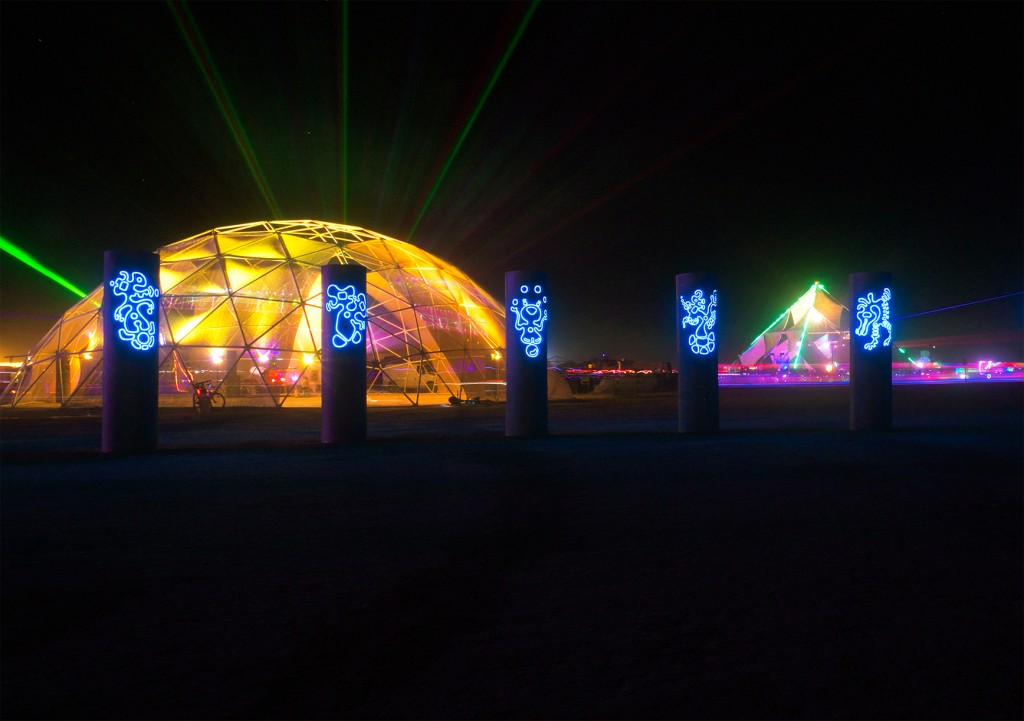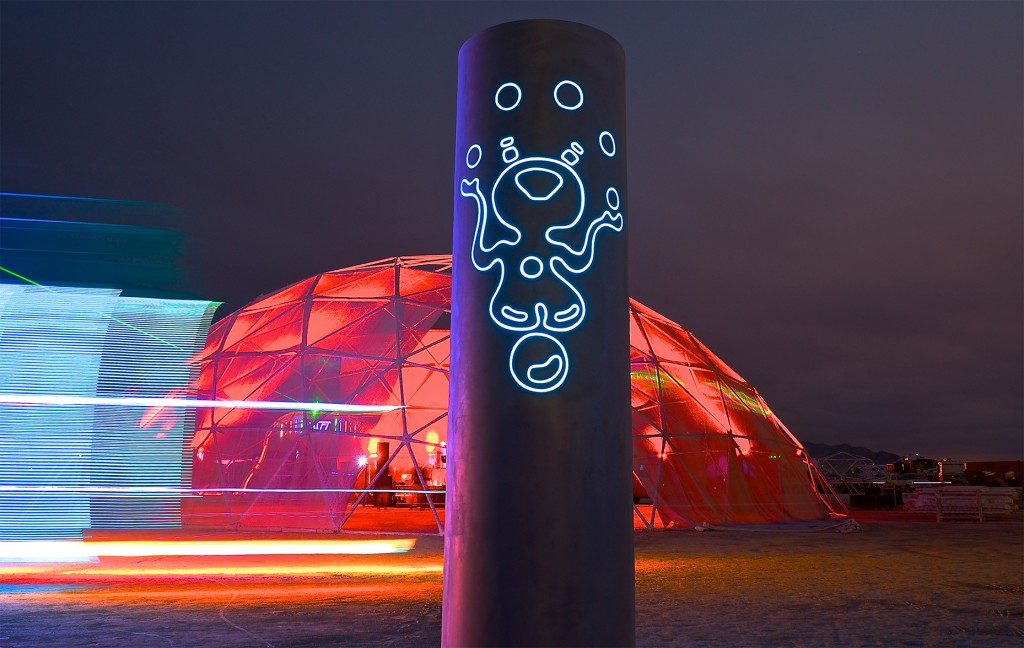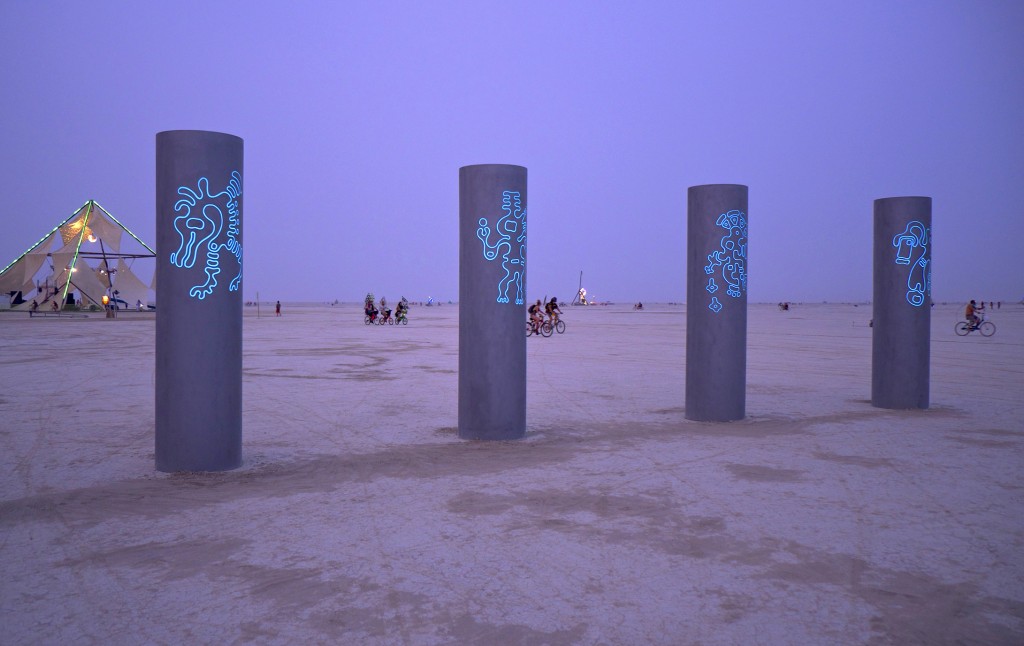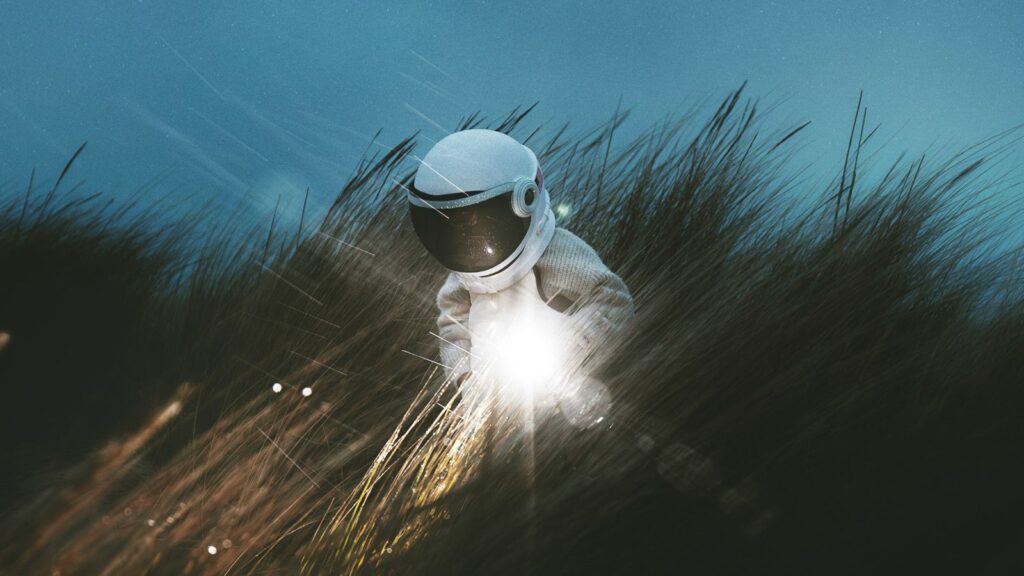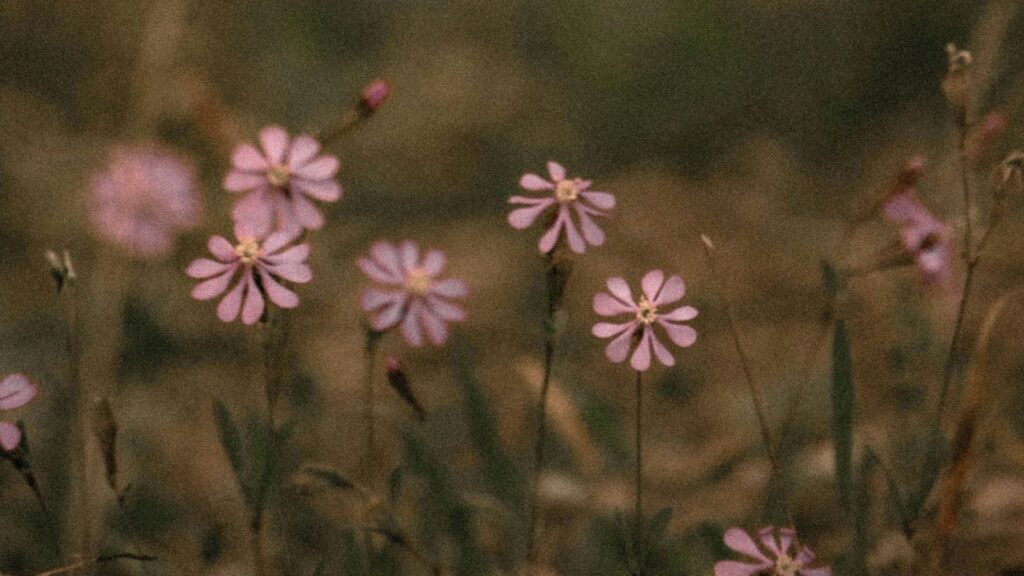The first time I met Jason W. A. Tucker and his family we spent the afternoon geeking out on language, storytelling, and the power of images to suggest and embody concepts. Tucker’s elegant and bold images, carved into steel pillars and lit from within, continue to fascinate. The pillars stand alone — in Black Rock City and, soon, in Marfa, Texas — but knowing about the depth of thought and nuance that Tucker brings to the pieces only enriches their allure. It’s been a joy to correspond over the last year about these pieces; I’ve been looking forward to sharing this conversation for a long time. Now, as the pillars prepare to make their way to Marfa, the timing is perfect.
Lily: Where did the images come from?
Jason: I’ve always loved drawing patterns. I like the trance-like feeling of drawing without a plan and surrendering to where the line takes me. In LA, around 1998, my drawings got less abstract and became more figurative as these cellular entities started showing up. They were unique, and lively, and it ignited a passion in me to draw and paint more. I felt I had discovered something and wanted to go deeper.
I was in awe that my abstract lines, squares, and triangles had changed into this arcane circus of cells. I connect with the experience as a communion with alien intelligence because of the strangeness of it, but there’s something familiar and ancestral going on too. There’s an erotic quality to the experience, like when you involuntarily fall in love, it felt intimate and sensual. It still does. Maybe it’s due to the animistic part of the art. The act of surrendering to the line does invoke a loss of boundaries and there’s a feeling of merging into what is being drawn or painted, and the space between you and everything else disappears for a moment and your sense of self widens. This is why I’m moved to make this large outdoor installation. I want to create a sacred space where one can contemplate this mystery, and experience this confounding of the boundaries, and the animistic power of art.
It sounds like you found a kind of peace in the drawing. I can imagine this to be in a generative tension with your love of language and words – can you tell me about how you relate to language? What do you love about it?
I see our shared realities swimming in the domain of languages and codes. We’re made of language and should reflect on this idea more. The language we use determines our reality. I think noticing and experiencing the sensual dimensions of language opens you up to a more empathic human experience.
To have a particular belief isn’t necessary in this context because it’s more along the lines of some cosmic consciousness, or mysticism, where everything is bound together by love. I think Carl Jung’s idea of synchronicity can be thought of as a language in the sense that it’s a pattern. He saw synchronicity as that point when an inner and outer event comes together in a way that can’t be explained by cause and effect but still has meaning to the observer. In this way, facts are less important than the patterns they’re revealing, so comprehension becomes second to your skills of intuition and pattern recognition.
I think the phonetic alphabet is a great code for us to move around and explore the material universe and such, but the drawback has been a collective separation from a great many other aspects of our total nature. I think it’s apparent that the method of communicating information has more influence on us than the information itself. I was reading about the Ouija board the other day and came across something where it credits its initial popularity to the amount of human loss during WWI and the influenza epidemic. I think of this and see how a culture steeped in literacy discovers a way to make a long distance call to a dead relative or a loved one by hacking the alphabet, transcending time and place.
You speak to communion and communication in the process of transcribing and seeing these forms. I wonder what you learned through the experiences – what, if anything, do you carry with you now in your regular walking through daily life from these encounters?
My thoughts about language and art have certainly expanded into realms of magic and imagination. I now see art as a means for psychic survival, and I see the immediate nature of art and its power of not only self-transformation, but collective-transformation. I no longer see the act of creation as some addition to reality, I feel that creation springs from the soul in the form of new patterns that act to dissolve duality, which shifts our perspective and our notions of boundaries, and these constant alterations are tied to our survival. My art experience has been transformative, I see the imagination as a playful circus of infinite possibilities; a realm of communication where information is sensually understood and visually beheld. I rarely fill in the cellular entities with a solid color, because it’s a transparent dimension where thoughts are bodies and bodies are thoughts; where form and communication are the same.
I’m struck (and delighted) by phrases like “we’re made of language” and “sensual dimensions of language,” can you say more about this? (I often say that we have been told a lie that language is not a creature of the body, when I find it to be entirely a creature of the body… Textured and nuanced, created and perceived by the entire body. To believe otherwise is, I feel, to diminish the power of language and to deny many aspects of being human… Of course, I love language (and seeds) most in this world, so I’m a bit biased.)
From the DNA inside us to the global civilization outside us, there’s a fusion of language, art, and technology whose active role appears to be in shaping matter, both organic and inorganic. This exchange is perpetually occurring inside us and outside us, in our collation of thoughts and ideas, and their manifestations. You can see this everywhere.
I think of the art movement of Impressionism as a sensual dimension of communication. These artists knew what they were going through, they were passionately writing about their art experience as a direct encounter with nature. I know it was later in the movement, but Van Gogh’s letters to Theo are all about seeing art as sensual and spiritually transformative. All these ideas led to the modern art movement where the experience expanded to include dreams and searching within oneself. Kandinsky saw this art as a step towards “an epoch of great spirituality.”
So would you say that how we communicate is as or more important than what we communicate? And that synchronicity is a method of communication from life outside the boundaries of what we call the “self”?
Some cultures see time linearly and others see it cyclically, and how these cultures communicate is the key difference. The Greek alphabet started around 700 BC and within 300 years they lost an oral tradition based on myths of the day-night cycle and life-death cycle. From then on, as far as Western civilization goes, it’s mostly been about conceiving events as historical, seeing time linearly, and focusing on causes and their effects.
The value of a new idea is almost always judged by its logical consistency. This is a clear bias towards causal explanations. I think our sequential view of reality is actually embedded in the linear structure of the alphabet itself. The alphabet is a binary code with antonyms and synonyms geared to enhance the experience of visually sequencing information. There are psychic parallelisms that can be seen outside this model of visually sequencing information and that’s what I’m referring to as synchronicity. The simultaneity of an outer and inner event being meaningfully arranged is not logical in the context of a binary code, so synchronicity can be thought of as a higher ontological pattern of how the physical world and how consciousness are interconnected.
Can you tell me about the pillars going up in Marfa?
I grew up in San Angelo, Texas, not far from Marfa, and I always loved our family trips going to and through there. The climate is great with the high elevation, and the Marfa lights piqued my interest at a young age, seeing them floating along the horizon. Later I’d visit Marfa for various art events, coming in from LA.
In the late nineties my friends and I would place art cards at the Marfa Book Company and the coffee shop. When I decided to go back out to Burning Man with the larger 10ft steel pillars, I thought about Marfa a lot. I’ve wanted to place pillars out there for a long time. Last year I made several trips to Marfa with my wife, Wendy, and our daughter, Audrey, and we connected with kindred spirits and longtime residents, Bob and Jane Crockett. They’re big supporters of the project, and through them we’re looking at various land options.
I’m happy how it’s all coming together. We went for fiscal sponsorship recently with Fractured Atlas in New York, and we’re now seeking grants and donations. My team and I aim to make this installation something special. We’re working on it now in Oakland at American Steel Studios. We did a light test at night with a few of the pillars recently and it was great seeing the look on everyone’s faces. Something sublime happens when you see the images illuminated and elevated up on the pillar. They make a serious impression. There’s an energy that draws you in, it’s compelling, and magical, especially when they’re all grouped together, they take on an animated feeling, deep and mysterious, something to be understood. We’re super excited to get them out there!
Links to share
Actual Contact website
Fractured Atlas – fiscally sponsored project
http://www.fracturedatlas.org/site/fiscal/profile?id=11045
Desert USA article

